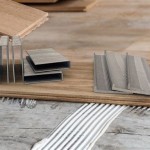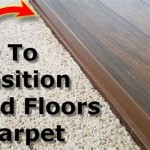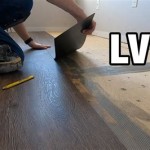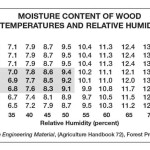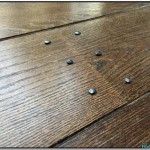Solid Hardwood Flooring Cost Per Square Foot: A Comprehensive Guide
Solid hardwood flooring remains a popular and desirable choice for homeowners seeking durability, timeless beauty, and increased property value. Understanding the cost associated with this flooring option is paramount for effective budgeting and project planning. This article provides a detailed exploration of the factors influencing the cost per square foot of solid hardwood flooring, offering insights into materials, installation, preparation, and ongoing maintenance considerations.
The cost of solid hardwood flooring is typically calculated on a per-square-foot basis, allowing for easy comparison between different wood species and grades. However, the final project cost extends beyond the price of the wood itself. Labor costs, subfloor preparation, and the complexity of the installation all contribute to the overall expense. Furthermore, potential for material waste during the installation process should be factored into the initial estimates.
Solid hardwood flooring distinguishes itself from engineered hardwood by its construction. Each plank is a single piece of wood, cut from a solid tree. This characteristic contributes to its longevity and ability to be refinished multiple times over its lifespan. Common wood species include oak, maple, hickory, and walnut, each possessing unique grain patterns, hardness, and color variations. Exotic species like Brazilian Cherry or Ipe are also available but generally carry a higher price tag.
Understanding the Material Costs of Solid Hardwood Flooring
The price of solid hardwood flooring is subject to considerable fluctuation based on several key parameters. These include the type of wood, its grade, the width and thickness of the planks, and market demand at the time of purchase. Understanding these variables is essential for making informed decisions that align with both aesthetic preferences and budgetary constraints.
Wood Species: The species of wood is a primary determinant of cost. Oak, particularly red oak, is often considered a more affordable option due to its abundance and fast growth. Maple, known for its light color and consistent grain, typically falls in a mid-range price point. Hickory, prized for its exceptional hardness and durability, can be slightly more expensive than oak or maple. Walnut, a premium hardwood characterized by its rich dark color and distinctive grain patterns, generally commands a higher price. Exotic species, imported from various regions around the world, are generally the most expensive, reflecting transportation costs and relative scarcity.
Wood Grade: Hardwood flooring is graded according to the presence of knots, mineral streaks, and color variations. Higher grades, such as "clear" or "select," exhibit minimal imperfections and offer a more uniform appearance. These grades are typically more expensive due to the greater yield of usable lumber from each tree. Lower grades, such as "common" or "rustic," feature more character markings and color variation. While these grades may appeal to those seeking a more natural or aged aesthetic, they can also require more careful installation to minimize waste and ensure a visually appealing final result. The grading system employed can vary slightly between manufacturers, so comparing samples and understanding the specific grading criteria is important.
Plank Dimensions: The width and thickness of the planks also influence the cost. Wider planks generally require larger trees to produce, increasing the material cost. Thicker planks offer greater durability and allow for more refinishing cycles over their lifespan, but they also contribute to a higher initial price. The standard thickness for solid hardwood flooring is 3/4 inch, but other options are available, offering varying levels of structural stability and longevity. Plank width can range from narrow strips to wide planks exceeding 7 inches. Wider planks can create a more expansive and luxurious look, but they may also be more susceptible to cupping or warping in environments with significant humidity fluctuations.
Market Conditions: External economic factors, such as lumber prices, transportation costs, and overall market demand, can also influence the price of solid hardwood flooring. Periods of high demand or supply chain disruptions may lead to price increases, while periods of lower demand may present opportunities to secure more favorable pricing. Consulting with multiple suppliers and monitoring market trends can assist in identifying optimal purchasing times.
In summary, the material cost of solid hardwood flooring can range from $3 to $10 or more per square foot, depending on the factors outlined above. Careful consideration of these variables is essential for establishing a realistic budget and selecting a flooring option that meets both aesthetic and functional requirements.
Preparation and Installation Costs Associated with Solid Hardwood Flooring
Beyond the cost of the flooring material itself, the preparation and installation phases represent a significant portion of the overall project budget. Proper subfloor preparation is essential for ensuring a stable and level surface for the hardwood flooring, while the installation process requires specialized tools and expertise to achieve a professional and long-lasting result. Ignoring these stages can lead to costly problems down the line, such as uneven floors, squeaking, or premature failure of the flooring system.
Subfloor Preparation: The subfloor, typically constructed of plywood or concrete, must be clean, dry, and level before hardwood flooring can be installed. Any imperfections in the subfloor, such as cracks, unevenness, or moisture issues, must be addressed prior to installation. This may involve patching cracks, leveling the surface with self-leveling compound, or installing a moisture barrier. The cost of subfloor preparation can vary significantly depending on the existing condition of the subfloor. Minor repairs may cost only a few dollars per square foot, while more extensive repairs or leveling may require more substantial investment. Moisture testing is crucial, especially in concrete slabs, to ensure that moisture levels are within acceptable limits for hardwood flooring installation. Failure to address moisture issues can lead to warping, cupping, or mold growth.
Installation Method: Solid hardwood flooring is typically installed using one of two methods: nail-down or glue-down. The nail-down method involves fastening the planks to the subfloor using nails or staples. This method is generally faster and less expensive than the glue-down method, but it may not be suitable for all subfloor types. The glue-down method involves adhering the planks directly to the subfloor using a specialized adhesive. This method provides a more secure and stable installation, but it is also more labor-intensive and expensive. The choice of installation method will depend on the subfloor type, the wood species, and the desired level of stability. A professional installer can advise on the most appropriate method for a given project.
Labor Costs: Labor costs for installing solid hardwood flooring can vary depending on the complexity of the project, the location, and the experience of the installer. Installation costs typically range from $3 to $8 per square foot, but this can vary depending on specific circumstances. Complex patterns, intricate border designs, or installations in challenging spaces may command higher labor rates. Obtaining multiple quotes from qualified and licensed installers is essential for ensuring competitive pricing and quality workmanship. It is also important to verify that the installer is insured and bonded to protect against potential liability.
Additional Considerations: Other costs associated with installation may include the removal and disposal of existing flooring, the installation of baseboards or trim, and the cost of moving furniture. These ancillary costs should be factored into the overall project budget to avoid unexpected expenses. It's always advisable to have a detailed written contract with the installer outlining the scope of work, the timeline, the payment schedule, and any warranties.
Long-Term Maintenance and Refinishing Costs
The durability and longevity of solid hardwood flooring are significant advantages, but it's important to factor in the costs associated with ongoing maintenance and potential refinishing. Proper maintenance will extend the life of the floor and preserve its beauty, while refinishing can restore its original luster and address wear and tear accumulated over time.
Regular Maintenance: Regular cleaning and maintenance are essential for preserving the appearance and integrity of solid hardwood flooring. Sweeping or vacuuming regularly to remove dirt and debris will prevent scratches and abrasion. Using a damp mop with a pH-neutral cleaner specifically designed for hardwood floors will help to remove stains and spills. Avoid using excessive water or harsh chemicals, as these can damage the finish. Placing mats at entryways will help to trap dirt and moisture, reducing wear and tear on the flooring. Using furniture pads under the legs of chairs and tables will prevent scratches and dents. These simple maintenance practices can significantly extend the life of the flooring and reduce the need for more extensive repairs or refinishing.
Refinishing: Solid hardwood flooring can be refinished multiple times over its lifespan, restoring its original beauty and extending its longevity. Refinishing involves sanding down the existing finish and applying new coats of stain and protective topcoat. The cost of refinishing typically ranges from $3 to $7 per square foot, depending on the extent of the damage and the type of finish used. Refinishing can address scratches, dents, and worn areas, restoring the floor to its original condition. It can also be an opportunity to change the color or sheen of the floor to update its appearance. The frequency of refinishing will depend on the level of foot traffic and the care taken in maintaining the floor. Generally, a hardwood floor should be refinished every 7 to 10 years in high-traffic areas.
Repairs: Minor repairs, such as replacing damaged planks or filling in gaps, may be necessary over time. The cost of these repairs will depend on the extent of the damage and the availability of matching planks. It is always advisable to keep extra planks from the original installation to facilitate repairs. Addressing repairs promptly will prevent further damage and maintain the overall appearance of the floor.
Professional Inspection: Periodic professional inspections can help to identify potential problems early on and prevent costly repairs down the line. A qualified flooring contractor can assess the condition of the floor, identify any areas of concern, and recommend appropriate maintenance or repair measures. The cost of a professional inspection is relatively low, but it can provide valuable insights and prevent more serious problems from developing.

Average Hardwood Flooring S In 2024 Forbes Home

How Much Does Hardwood Flooring Cost 2024 Guide

Cost To Install Hardwood Floors The Home Depot

Cost To Install Hardwood Flooring Floor Fixr

The Complete Guide To Flooring Costs By Type Twenty Oak

Cost To Install Hardwood Flooring Floor Fixr

How Much Does Hardwood Flooring Cost 2024 Guide

Cost To Install Hardwood Flooring Floor Fixr

Here S How Much Hardwood Flooring Costs In 2024 Angi
How Much Hardwood Flooring Costs And To Save
Related Posts


